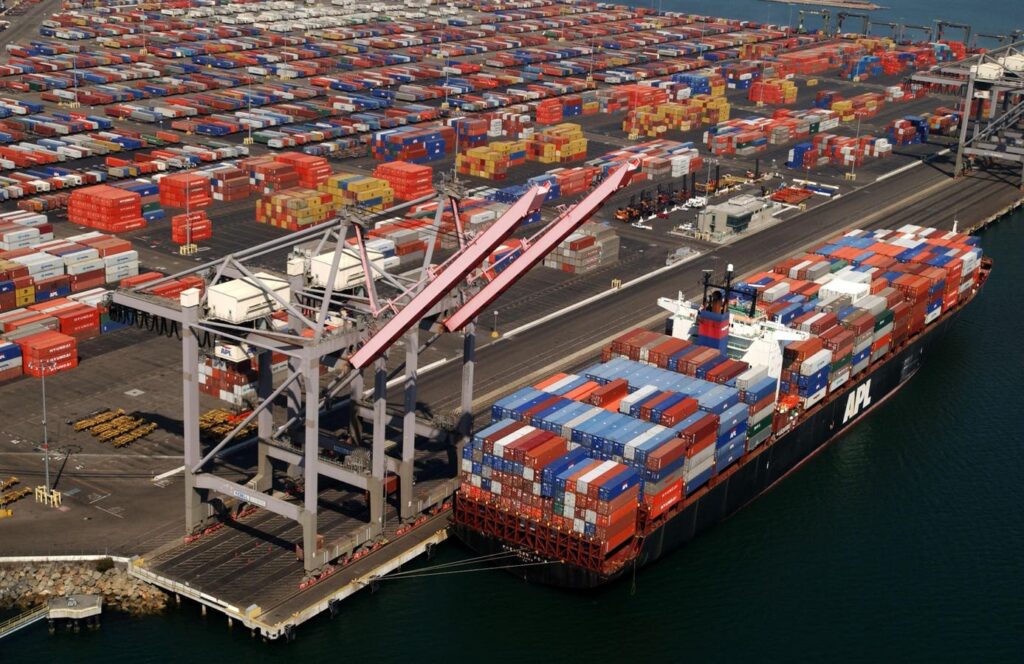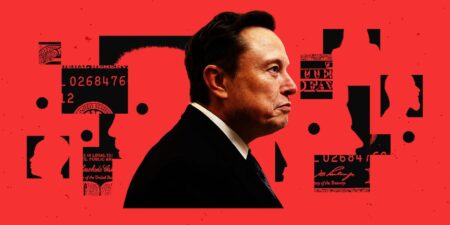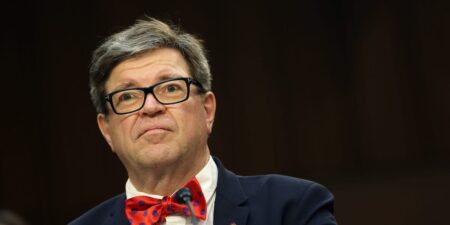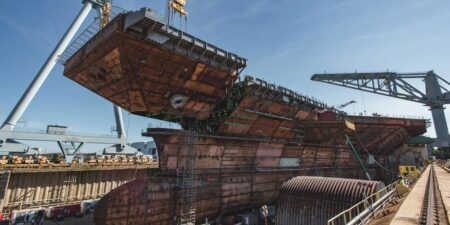The forceful Realpolitik application of U.S. trade policies and tariff threats is intended to support U.S. national security and economic security in Cold War Two. U.S. international policy and geopolitical focus have shifted to reduce economic security and national security risks for the United States because great power competition has morphed into kinetic conflicts that risk fractal expansion without effective geoeconomic deterrence. Since 2022, interrelated kinetic military conflicts have proliferated. Given the current operating environment, U.S. geopolitical conflict deterrence and economic statecraft are being advanced by tariff and trade Realpolitik.
U.S. Tariff Realpolitik Is Intended To Support U.S. Economic Security And National Security
Tariffs have become a source of concern and confusion for U.S. trade partners and domestic businesses alike. Forceful trade and tariff threats by the Trump Administration appear rooted in a strategy to strengthen U.S. economic security and national security.
Most people are very familiar with national security, which is the physical protection of a country from adversaries by using armed forces to provide protection and deterrence in the face of a kinetic military conflict risks. Economic security is focused on the economic and financial ability of a country to project soft power diplomacy and statecraft to ensure deterrence and dominance while also ensuring that country’s ability to effectively wage war through economic self-sufficiency.
While the branches of the U.S. military support are the prime example of a lever of national security, tariffs and trade policies are becoming the cornerstone of U.S. economic security. Moreover, the intent of these economic security policies is to support U.S. national security by securing materiel and other critical supply chains.
Securing U.S. economic and national security has become a priority in response to the growing economic, technological, financial, materiel development, and military coordination between China, Russia, Iran, and North Korea is the challenge, which is the focus of extensive Cold War Two research and training from Prestige Economics.
Economic Power And Tariffs
Economic security includes two pillars: the economic power of an economy and that economy’s capacity for self-sufficiency. Shoring up the strength of these two pillars appears to be the motivation underpinning tariff Realpolitik that ensures U.S. economic dominance, prevents a proliferation of kinetic military conflicts, and shields the United States from adversarial influences.
The main measure of U.S. economic power is Gross Domestic Product. For the United States, this is a huge advantage because not only is the U.S. economy the biggest in the world, but it has also been one of the fastest-growing advanced economies in recent years. The strength of the U.S. labor market should also be considered a key source of economic power, especially since the latest GDP showed that personal consumption was almost 70% of GDP.
Alongside economic growth as a measure of economic power is U.S. capital stock, which is how economists describe the physical productive assets in an economy, like buildings, businesses, energy assets, technology industries, manufacturing, and infrastructure.
Then, there is also the wealth of an economy, which can be demonstrated by the fact that over 60% of global stock market valuation is held in the United States.1
Finally, one might also include access to international debt markets as a key factor of economic power. One of the main reasons the United States won Cold War One was the U.S. ability to outspend the U.S.S.R, which was facilitated by its access to debt markets. While the United States currently has a record level of government debt of around $36 trillion, most of that is held domestically, and only a small percentage is held by foreign powers.2 For example, China only holds around 2% of U.S. federal government debt.
How the application of U.S. and reciprocal tariffs impact GDP, wealth, and equity markets is quite difficult to predict. However, U.S. tariff and trade Realpolitik is primarily designed to secure U.S. economic self-sufficiency and support economic power and security.
Economic Self-Sufficiency And Tariffs
The second pillar of economic security is self-sufficiency, and it is much weaker than the pillar for economic power.
Globalization has intertwined the supply chains of almost every country. However, the ability to maintain economic power depends on a country’s ability to effectively wage a kinetic military conflict with an adversary. That means the United States needs a materiel supply chain that is completely independent of China, Russia, Iran, North Korea, and whatever other countries may seek to militarily and politically align themselves with these key players in Cold War Two®.
While many of these risks were highlighted in the first Trump Administration, U.S. weaknesses were acutely revealed during the Covid-19 pandemic, which is why the Biden Administration kept adding to trade and technology restrictions involving China. China’s response was an intended aim of completely severing the Chinese economy from U.S. hardware and software in a directive known as Document 79, which was produced in 2022 and has been termed “Delete A,” representing “Delete America.”3
The interwoven technology, commodity, and manufacturing supply chains U.S. economic self-sufficiency and security.
The core elements of economic self-sufficiency as it pertains to economic security are materiel inventories and production, dual-use technology independence, and the raw physical metal tonnage required to build the weapons of war.
Many of these factors have weaknesses undercutting economic self-sufficiency.
Materiel Production, Metals Tonnage, And Tariffs
U.S. economic self-sufficiency has been eroded by falling levels of materiel.
With multiple kinetic conflicts ongoing globally as a Part of Cold War Two, the United States has been providing military aid to key U.S. allies in this broader struggle, including Ukraine, Israel, and Taiwan. Supporting these allies with materiel and funds undermines U.S. adversaries. However, it has also depleted some U.S. materiel reserves. This means significantly greater U.S. and NATO investments in armaments, rockets, missiles, and other weaponry likely lie ahead.
Additionally, since China has occupied the position of the fulcrum in the global economy, its metals production has surged as U.S. steel and other metals production have fallen. That’s a big concern if the U.S. needs to be able to maintain tonnage production levels to be economically self-sufficient effectively in the event of a significant kinetic military conflict.
These risks underpinned the Section 232 steel and aluminum tariffs that made their debut in 2018. They are the reason President Biden left these tariffs in place, and they are the reason President Trump has pledged to announce more tariffs on steel and aluminum. Clearly, maintaining tonnage is one of the few bipartisan issues in American politics because it is one of the core elements of economic self-sufficiency.
Without the tonnage to make steel, aluminum, and other metals in the United States, economic self-sufficiency is at risk. While the U.S. has allies from which it can source metals, China has repeatedly engaged in metals dumping to undercut global prices as a predatory means to decimate smelting and mills all over the world, putting any future production outside the United States at risk.
Dual Use Technology, Trade, And Tariffs
The supply chain and technology risk factors that directly impact U.S. materiel supply chains are at the top of the list of risks of self-sufficiency risks, but intentional trade in technology goods is also a critical chokepoint.
Like the Section 232 tariffs from 2018, the Section 301 tariffs that were more focused on technology were enacted in the first Trump Administration and left largely in place by the Biden Administration, which further expanded restrictions on Chinese technology and investments in Chinese information and communication technology industries.
Because Taiwan is at the heart of Chinese regional geopolitical ambitions, this is a particularly sticky problem because Taiwan is where the majority of the world’s highest-value and most powerful computer chips are manufactured.
Restrictions on Chinese goods, especially dual-use technologies, are likely to expand significantly in the years ahead, culminating in a policy drive to mirror Document 79 and the “Delete A” directive with an American countermeasure to “Delete C” or “Delete China,” at least with respect to Chinese hardware and software. At some point in the not-too-distant future, the U.S. economy will need to function without Chinese technology. That’s a much bigger goal, and it will go well beyond the pushes to ban TikTok and DeepSeek.
Tariffs Are An International Trade Policy Sword of Damocles Designed To Increase U.S. Economic Security
While the intention of U.S. tariffs is to shore up economic self-sufficiency and, with it, shore up economic power and security, the threat of tariffs hangs like an international trade policy sword of Damocles above major U.S. trade partners, creating an atmosphere of uncertainty in global markets.
As a negotiation strategy, no deal is done until it’s done, and no policy is enacted until it is enacted. Unfortunately, while this approach gives the U.S. leverage, it also makes business planning highly unpredictable for global supply chain businesses, including manufacturing and material handling industries.
The goal behind using U.S. tariff threats is to yield concessions from trade partners to improve U.S. economic security and national security.
These U.S. policies appear to be a response to the geopolitical coordination between China, Russia, Iran, and North Korea, which began in earnest on February 4, 2022, with the Joint Statement of the Russian Federation and the People’s Republic of China on the International Relations Entering a New Era and the Global Sustainable Development.4 The Russian war on Ukraine began during the same month, which has been followed by further coordination between these countries.
China’s evolving geopolitical maneuvers, including its military posturing and threats to Taiwan, China’s growing alliances through BRICS, the soft power projection of the Belt and Road initiative, and goods-dumping and tariff-evading trade policies that distort global markets and undercut U.S. industry.
By leveraging tariffs, the U.S. aims to counterbalance China’s economic influence and strengthen domestic supply chain resilience.
Because this has proven to be an effective negotiation strategy, we should expect to see more of it in the future.
Future Tariff Announcements to Drive Concessions
President Trump has promised to announce across-the-board U.S. tariffs on its trading partners. It seems very likely that those tariffs are primarily intended to encourage geoeconomic cooperation to clamp down on Chinese economic influence, goods dumping, and tariff evasion through the use of transshipments.
It may seem odd to think of President Trump as the Elliot Ness of international trade, seeking to stop Chinese tax evasion (i.e., tariff evasion) through transshipment, but that may be closer to reality than may appear at first glance.
In addition to stopping Chinese tariff evasion, Trump has voiced support for setting U.S. tariffs at reciprocal rates, which aligns with the Reciprocal Trade Act introduced in the House in January. However, despite multiple references to tax revenue from tariffs, the primary goal of these U.S. tariff announcements is likely to encourage U.S. trade partners to make concessions, which seem likely to include a mix of economic security, national security, geoeconomic, and tariff concessions.
For this reason, President Trump may postpone or otherwise defer tariffs for some countries even without reciprocal tariff reductions so long as other geopolitical or geoeconomic concessions that support U.S. national security or economic security aims can be gained.
While tariffs have been threatened and applied, economic security is likely to be best served by preventing detrimental tariffs from being applied to U.S. military and geoeconomic allies as well as potential countries that could be brought into alignment with U.S. economic security and national security aims.
Future Tariff Impacts Depend on Implementation
The size of the impact that U.S. tariffs (and resulting retaliatory tariffs) have on U.S. inflation and growth will depend greatly on the timing and duration of tariff implementation.
Any negative impacts on U.S. growth and inflation from U.S. tariffs and any reciprocal tariffs will hinge directly on when, if, and for how long they are implemented.
For now, the most significant economic and business risks stem from planning difficulty and business uncertainty against a backdrop of trade wars and geopolitical risks designed to counterweight growing risks from China’s coalition of Cold War Two® allies.
Despite significant support from some business leaders for President Trump, tariffs are largely unwelcome. However, the trade and tariff policies are about more than near-term business activity. They are at the sword and the shield of the Trump Administration’s path to shore up economic security – and, with it, national security.
What do you think about the concept of economic security?
Let me know what you think in the comments below.
Also, be sure to subscribe to my YouTube channel and visit Prestige Economics and The Futurist Institute for additional content about the economy, Fed policy, tariff and trade risks, and supply chain.
Read the full article here
















